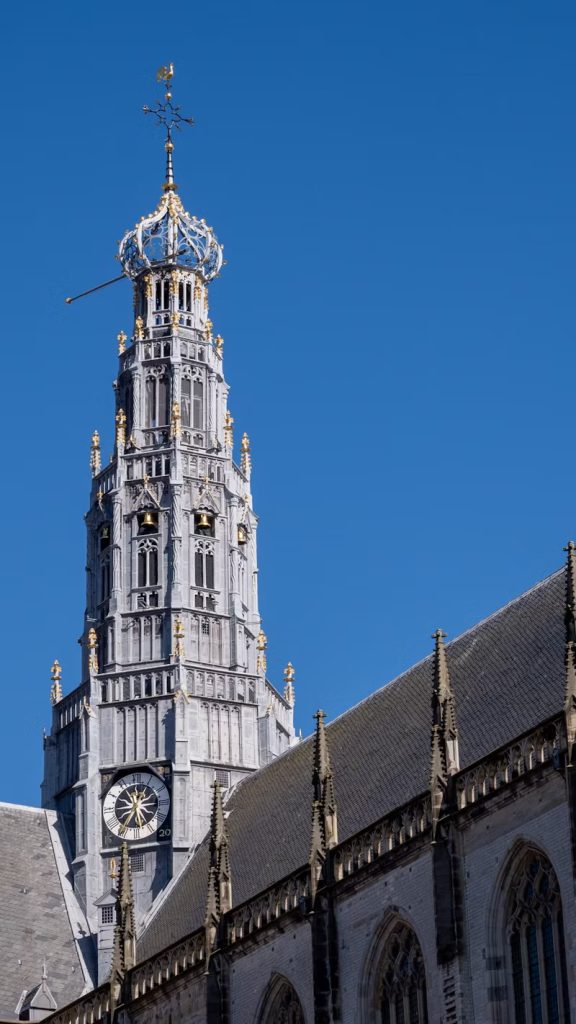The clock is ticking. Your inbox is overflowing, but you also long for an environment that inspires and offers the space to be productive. Haarlem is just such a place. This historic city combines the charm of canals and medieval streets with the advantages of modern amenities like fast Wi-Fi, countless coffee shops, and a growing community of freelancers and remote workers. What's more, you can be in Amsterdam in fifteen minutes and on the beach at Zandvoort in ten. That makes Haarlem an ideal balance between urban dynamism and tranquil relaxation.
Ever wondered why some cities continue to attract digital nomads while others only see passing visitors? Haarlem offers the answer: a mix of workspaces, networking events, and a quality of life that invites you to linger. In this article, you'll discover the best cafés to work from, coworking spaces with flexible options, and insider tips to make your workday efficient and enjoyable.
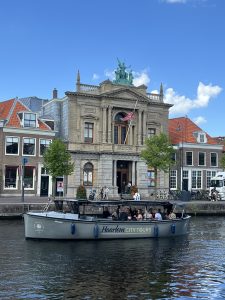
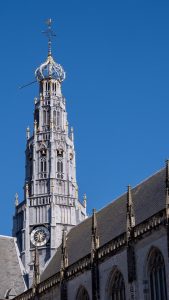
Why is Haarlem an ideal city for digital nomads?
Haarlem's location is one of its greatest assets. From Haarlem, you can reach Amsterdam by train in 15–17 minutes, while Schiphol International Airport is less than 20 minutes away. This connectivity makes it easy to plan international appointments while still living in a city with a high quality of life. Haarlem also offers an abundance of parks, museums, and terraces, allowing you to relax immediately after work. According to Statistics Netherlands (CBS) statistics (2023), Haarlem scores highly for livability and safety, which is important for remote workers.
The language proficiency of the residents also plays a role. The Netherlands consistently ranks among the top five for non-native English speakers (EF English Proficiency Index, 2024). For digital nomads, this means you'll rarely encounter language barriers in cafes, coworking spaces, or at networking events. It feels like the city was tailor-made for international knowledge workers.
Which cafes in Haarlem are best suited for working with your laptop?
Cafés are often the first workplace sought by digital nomads. Haarlem boasts many that not only serve excellent coffee but also offer practical amenities like power outlets, quiet corners, and a stable internet connection. Many cafés also have a peaceful atmosphere, allowing you to concentrate on work without being constantly interrupted by loud conversations.
A good workspace in a café depends on three factors: Wi-Fi speed, coffee quality, and atmosphere. It's like the foundation of a recipe. If one ingredient is missing, the dish lacks its power. The same applies to work cafés: you need all three to be truly productive.
Where can you find the best coffee and fast WiFi in Haarlem?
The combination of specialty coffee and stable Wi-Fi is essential for digital nomads. Haarlem is known for its third-wave coffee houses that carefully select and roast their beans. In many of these cafés, you'll also find baristas who are experts in their craft and passionate about serving you a perfect espresso or flat white. Wi-Fi speeds in the Netherlands are generally high; in urban areas, the average speed is over 150 Mbps (Akamai, 2023). This makes videoconferencing, cloud storage, and multitasking effortless.
A personal experience: on a rainy day, I was working in a café on the Gedempte Oude Gracht. With the rain tapping against the windows, I was able to hold a two-hour Zoom session without interruption. It felt like the city provided the perfect background music to help me stay focused.
Which cafes offer quiet workspaces and an inspiring atmosphere?
Peace and quiet are crucial when you want to work focused. Haarlem boasts several cafés with quiet workspaces, soft background music, and ample natural light. Many nomads prefer locations where natural materials and plants are incorporated into the interior. Psychologists point out that a green environment increases concentration and reduces stress (Kaplan & Kaplan, 1989).
An inspiring atmosphere is often just as important as silence. A café with art on the walls, a creative interior, or a canal view can spark your creativity. It's like a writer's room where every detail contributes to allowing your thoughts to flow freely.
Are there cafes in Haarlem that are popular among digital nomads?
Yes, Haarlem has cafés known as meeting places for digital nomads. The advantage of such locations is that you not only work productively but also have the opportunity to meet like-minded people. This can lead to spontaneous conversations, new ideas, or even future collaborations. These cafés function as a kind of "third place": not home, not the office, but still a place where work and community converge.
According to research by coworking specialist Deskmag (2022), many nomads cite social interaction as a key reason for working remotely. Popular cafés are becoming not only workspaces but also hubs for exchanging ideas and experiences. It's a quiet form of networking that can enrich your productive day.
Which coworking spaces in Haarlem offer flexible workspaces?
Coworking spaces in Haarlem offer an alternative to cafés. They combine professional facilities with a community of freelancers, entrepreneurs, and remote workers. Flexibility is key: you can often choose a day pass, a flexible subscription, or a permanent workspace. This makes coworking attractive for both short-term visitors and digital nomads staying in Haarlem for longer periods.
According to Statista research (2023), demand for coworking spaces is growing by 151% annually worldwide. Haarlem is following suit, with modern hubs focusing on sectors like tech, design, and consulting. These locations are equipped with meeting rooms, printers, ergonomic desks, and sometimes even wellness facilities such as meditation rooms.
What are the advantages of a coworking space compared to a café?
A café offers flexibility, but a coworking space delivers professionalism. Think quiet spaces for video calls, access to office equipment, and often free coffee and tea. The biggest advantage, however, is the professional image: a coworking space allows you to receive clients in a professional environment, something that's often difficult to achieve in a café.
Moreover, coworking spaces are designed to boost productivity. Good acoustics, ergonomic chairs, and natural light play a role. Think of it like the difference between a student room and a university library. Both offer space to work, but one is optimized for focus and results.
Which coworking spaces in Haarlem have the best facilities and community?
Coworking spaces in Haarlem distinguish themselves not only with their amenities but also with the community they attract. Some cater to creative entrepreneurs, others to tech startups. The presence of networking events, workshops, and skill-sharing sessions reinforces the added value of such a location. These are places where knowledge sharing is just as important as the physical workspace.
A strong community makes a coworking space more than just an office. It's an ecosystem where collaboration, mentoring, and even friendships develop. Research from the Harvard Business Review (2019) shows that people in coworking spaces feel more productive and less lonely compared to those who work from home.
How much does a day pass or membership cost in Haarlem coworking spaces?
Prices vary, but most coworking spaces in Haarlem offer affordable rates. A day pass typically costs between €15 and €25. Flexible subscriptions often start around €100 per month, while a fixed workspace ranges from €200 to €350 per month. Premium packages are available for entrepreneurs who need meeting rooms or business addresses.
The table below provides an overview of average prices and facilities:
| Type | Average price | Facilities |
|---|---|---|
| Day pass | €15 – €25 | Flex desk, Wi-Fi, coffee/tea |
| Flex subscription | €100 – €150 pm | Unlimited access, events, network |
| Fixed workplace | €200 – €350 pm | Own desk, locker, meeting room |
In short: cafés offer charm and spontaneity, but coworking spaces guarantee structure and professionalism. Which one you choose depends on your work style, budget, and need for community.
Where can you network with other remote workers and entrepreneurs in Haarlem?
Networking in Haarlem feels like strolling through a compact market for ideas: compact, yet rich in surprises. You'll find informal drinks, themed meetups, masterminds, and coworking days where freelancers, startup founders, and remote specialists connect. Why is that so effective? The city is well-organized, making it easier to recognize people working with similar tools, tech stacks, or target groups. This increases the likelihood of weak-tie connections that will prove valuable later (Granovetter, 1973). In a nutshell: you build social capital without wasting half a day commuting each time (Putnam, 2000).
Imagine it as a crossroads: on one side, specialist sessions (think design, data, content, web development), and on the other, generalist meetings about productivity, pricing, or personal branding. This mix makes it easy to switch between specific questions and broad strategy. To structure your choices, use the overview below as a mental router.
Haarlem City Tours Do you offer boat tours for corporate events, meetings, or celebrations? This can be combined with a scenic cruise through Haarlem. Enjoy from the water.
| Networking moment | Best for | Typical frequency | Vibe | Access |
|---|---|---|---|---|
| Coworking open day | Making new contacts, testing the workplace | Monthly | Informal, accessible | Often free or day pass |
| Tech/design meetup | Skill sharing, portfolio feedback | Monthly/Quarterly | Content-driven, community-driven | Free or small contribution |
| Business drinks | Lead generation, partnerships | Monthly | Social, deal-oriented | Low threshold |
| Mastermind/roundtable | In-depth cases, accountability | Weekly/monthly | Focus, confidential | Small group, registration required |
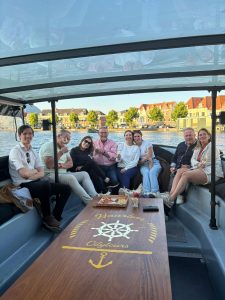
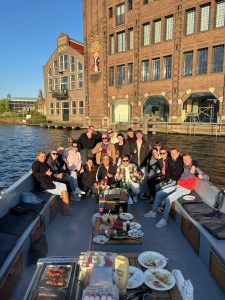
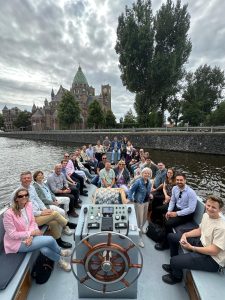
What networking events and meetups are there for digital nomads in Haarlem?
You can expect roughly three types of events: (1) knowledge events with talks or lightning talks, (2) co-creation sessions such as hack nights or content sprints, and (3) social gatherings where you primarily seek serendipity. The first category is ideal if you want to showcase your expertise; the stage forces you to sharpen your narrative and often leads to follow-up conversations. The second category gives momentum to projects: you exchange real-time feedback, divide tasks, and use shared tools for version control or note-taking. The third category revolves around relationship building without the burden of agendas; it is precisely there that opportunities often arise through weak connections (Granovetter, 1973).
Want to get the most out of such an evening? Think in phases: prepare, connect, follow up. In the preparation phase, write a two-sentence core pitch, define one specific question, and check for thematic channels or group chats. During the event, listen actively, jot down keywords, and ask follow-up questions about specific use cases. Then comes the aftercare: summarizing, thanking, and proposing a micro-commitment. It sounds like a top-level sport, but with a simple protocol, it becomes routine.
- Prepare: formulate your question, write a mini-bio, check the theme and dress code.
- Connect: Focus on listening, ask for specific projects, and offer one helpful introduction.
- Follow up: Send a brief summary of the conversation and propose one clear next step.
How do you find international communities and expat groups in Haarlem?
You can find international communities by smartly searching for cross-platform signals: language exchange, remote work, founders' club, women in tech, no-code, design critique. Pay attention to indicators like active event calendars, recent posts, and clear group rules. Communities with a short onboarding process (welcome message, etiquette, topic overview) often have a higher response rate and less noise. It's also worth checking coworking bulletin boards and physical posters; the offline route remains surprisingly effective and attracts serious participants.
Think of community discovery as testing a new tool: you consider user experience, stability, and the feature set. A good group offers asynchronous channels (Slack or Discord), clear moderation, and recurring schedules like monthly demo days or accountability check-ins. By being consistently present, you build reputation and automatically become a recognizable point of contact. This increases your chances of projects, referrals, and peer learning (Uzzi & Dunlap, 2005).
- Keywords to use: digital nomad Haarlem, expat Haarlem, founders Haarlem, design meetup, language exchange, tech talk.
- Signs of quality: fixed frequency, clear host, agenda beforehand, summary afterwards.
- Practical tip: After each event, write down three names and one shared interest for quick follow-up.
Are there specific events aimed at freelancers and creative entrepreneurs?
Yes. Think of portfolio evenings, feedback sessions, branding workshops, and sessions on quotes, hourly rates, and scope management. Such events not only help you with content but also offer practical tools for structuring your services. For example, you'll discuss personas, buyer journeys, and value propositions, and you'll receive feedback on your onboarding flow or contract templates. For creative entrepreneurs, there are also sessions on storytelling, art direction, and motion design: precisely the mix that's relevant for agencies and freelancers.
Also useful: so-called skill-swap evenings. You trade a micro-workshop on copywriting for a short UX audit, or you provide product photos in exchange for a pricing check. These exchanges build trust and lower the barrier to collaboration. Research shows that reciprocity and repeated interactions strengthen collaboration and accelerate knowledge sharing (Putnam, 2000). The result is a close-knit group of professionals who keep each other sharp and pass on assignments when schedules fill up.
- For freelancers: pricing clinic, proposal teardown, client meeting roll-play.
- For makers: show-and-tell, demo night, creative critique.
- For agencies: process design, pipeline management, team rituals and toolchains.
What are the practical tips for staying productive as a digital nomad in Haarlem?
Productivity here isn't a sprint, but a well-orchestrated city walk: you plan your route, choose your pace, and incorporate breaks. Start with timeboxing and deep work blocks of 60–90 minutes, followed by short recovery periods. Minimize context switching by grouping themes by time of day: morning for creation, afternoon for calls, late afternoon for administrative tasks. This approach reduces cognitive friction and approximates the principles of focused attention (Newport, 2016). Combine this with regular "commute breaks" on foot or by bike; movement improves mood and concentration.
Additionally, use the two-location principle: one café or coworking space for focus work, a second for meetings and brainstorming sessions. The physical transition serves as a mental reset and reduces the temptation to "quickly" interrupt your focus. Limit auditory noise with noise masking or earplugs, and see if you perform better with light background noise (café ambiance) or complete silence. Research on interruptions shows that even short interruptions cause a disproportionate loss of productivity (Mark, Gudith, & Klocke, 2008).
- Schedule two peak blocks before lunch; move calls to the afternoon.
- Work with a clear "definition of done" for each task; end the day with a micro-review.
- Limit notifications; use airplane mode during deep work.
How do you plan your workday smartly in a city full of cultural distractions?
Think of your day as a movie set: you have scenes (tasks), locations (workspaces), and a script (schedule). Start with a short, five-minute sprint plan, choose a maximum of three critical tasks, and link them to time slots and locations. Schedule your creative work in the morning when the city is quieter; reserve the afternoon for museums, walks, or a short break at the beach. The Pomodoro Principle (25–5) works like a metronome, but don't be afraid to use longer 50–10 cycles when you're experiencing flow (Cirillo, 2006).
A concrete schedule? Try this rhythm and adjust it weekly based on energy and commitments. You reduce decision fatigue by incorporating regular checkpoints. This might feel rigid, but it actually gives you more room for spontaneous inspiration. Once you master the framework, you can consciously deviate from it.
- 08:30–10:00 Deep work (creation, code, writing)
- 10:15–11:45 Focus block 2 (analyses, research)
- 12:00–13:00 Lunch & micro-walk
- 1:30–3:30 PM Calls & Collaborations
- 4:00 PM–5:00 PM Admin & planning tomorrow
- Evening: culture/sports/recovery
Which apps and tools help you find workspaces and events in Haarlem?
Think in categories instead of individual app names. This way, you optimize your stack for reliability and simple workflows: calendar and RSVP, map and location notes, tasks and project boards, knowledge base and notes, focus and noise reduction, and security via VPN and password manager. By choosing categories instead of an overload of individual apps, you reduce context switching and keep your cognitive load low (Kahneman, 2011). Where possible, link notifications to time slots so you don't hear beeps all day long.
The table below will help you select your toolset. Use it as a checklist and add your own favorites. Pay attention to features like offline access, shared boards, integrations (webhooks, API), and privacy settings like end-to-end encryption.
| Category | Goal | Key features |
|---|---|---|
| Agenda & RSVP | Planning, event reminders | Recurring appointments, notification windows, time zone support |
| Map & locations | Marking workstations | Favorites, notes by PIN, offline maps |
| Tasks & projects | Prioritize, track status | Kanban, labels, due dates, automations |
| Notes & knowledge base | Documentation and SOPs | Templates, backlinks, multimedia clips |
| Focus & sound | Reduce distractions | Noise masking, timers, website blockers |
| Safety | Privacy & data protection | VPN, password manager, 2FA |
How reliable are experiences and recommendations about workplaces in Haarlem?
Reviews are useful, but not infallible. Beware of recency bias (giving too much weight to recent experiences), selection effects (satisfied or dissatisfied visitors are more likely to write a review), and fake or sponsored feedback. Research into online reviews shows that a fraction can be manipulated and that star ratings lack context (Luca & Zervas, 2016). That's why triangulation is smart: combine multiple sources, assess specific details (Wi-Fi, power outlets, acoustics), and test it yourself at a quiet moment.
Think of recommendations as hypotheses that you validate with a short field test. Do a 60–90-minute test, record your throughput (number of tasks completed), subjective focus, and any friction such as latency during video calls or noise levels. If you meet your "definition of done" in that time, the location is probably suitable. Unsure? Check again on a different day; peak traffic can taint your first impression. Transparency about sponsorships or affiliations in recommendations increases reliability (Boerman, Willemsen, & Van Der Aa, 2017).
| Signal | Meaning | What to do |
|---|---|---|
| Many reviews but little text | Low information density | Search specifically for Wi-Fi/Acoustics/Sockets |
| Recent peaks in 5-stars | Possible promotional campaign | Check consistency after 3–6 months |
| Detailed, consistent descriptions | Higher reliability | Test the spot on the same day/time |
Checklist for self-assessment:
- Is the WiFi stable during a 30-minute video call?
- Are there enough electrical outlets within 2–3 meters of your location?
- Is the sound pressure acceptable and predictable?
- Does the service feel friendly and nomad-minded?
Ultimately, your own experience is the best measure. Combine rational cues with your sense of flow; productivity is both measurable and noticeable. Those who remain curious and methodical will easily find a set of favorite spots in Haarlem.
What do local entrepreneurs and digital nomads say about working in Haarlem?
Local entrepreneurs often praise Haarlem for its balance between professionalism and livability. They emphasize that the city has a pleasant pace: large enough to offer business opportunities, yet small enough for people to truly get to know each other. Many entrepreneurs appreciate the accessibility of coworking spaces and the networking potential during drinks or meetups. A common metaphor is that Haarlem is "the living room of the Randstad": well-organized and welcoming, yet with the advantages of a metropolis nearby.
Digital nomads themselves often cite the reliability of the infrastructure: fast internet connections, numerous cafés with work facilities, and the convenience of cycling through the city. Some compare Haarlem to well-known nomad hubs like Lisbon or Chiang Mai, but with a European cultural and historical richness. They note that the atmosphere is less hectic than in Amsterdam, which allows them to relax and be more productive. It gives them the feeling that they are working in an environment that offers not only space to perform, but also space to breathe.
Which sources and platforms can you trust for current information?
The sheer volume of information about workplaces and networking events can be overwhelming, and not everything is equally reliable. Reliable sources are often those with a clear editorial team or an active community. Think of platforms where user experiences are supplemented with concrete data such as Wi-Fi speeds, opening hours, or rates. Independent blogs and regional news websites often score higher on reliability than anonymous forums with little moderation. Scientific insights confirm that transparency and consistency are important factors in evaluating online information (Metzger & Flanagin, 2013).
A practical approach is triangulation: combine three types of sources. Use official city websites for general information, community-driven platforms for experiences, and coworking organizations themselves for up-to-date prices and amenities. Look for signals such as regular updates, clear attribution, and active interaction with readers. This mix not only provides you with reliable facts but also the nuances of personal experiences. This prevents you from basing your choices on one-sided or outdated information.
What are the most important conclusions and tips for digital nomads in Haarlem?
Haarlem proves to be a surprisingly well-rounded destination for digital nomads. The city offers cafés with excellent facilities, modern coworking spaces, and a vibrant community of entrepreneurs and creatives. Its compact size makes it easy to work productively while still fully enjoying culture, nature, and relaxation. The proximity of Amsterdam and Zandvoort enhances its appeal: in minutes, you can go from a business meeting to a sunset by the sea.
The key message: combine cleverly planned work blocks with the city's diversity. Those willing to experiment with locations and networking events will quickly discover which places generate the most energy. This makes Haarlem not only a place to work, but also a city that contributes to well-being, creativity, and sustainable productivity.

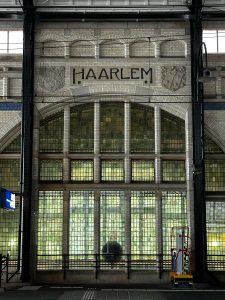
How do you choose the best workplace and build a valuable network?
Choosing a workspace starts with your work style. If you need quiet and focus, a coworking space with closed-off areas is a good choice. If you prefer informal and spontaneous work, a café with plenty of light and good coffee is a better option. Use a checklist to evaluate locations based on Wi-Fi, power outlets, atmosphere, and service. A day pass can serve as a test: after a few hours, you'll quickly see if the place suits your flow. It's similar to trying on shoes: what works for one person might feel uncomfortable for another.
The same principle applies to networking: choose wisely. Find events that align with your interests and skills. Be open to conversations and offer value before asking for anything. This way, you build relationships that go beyond exchanging business cards. Research shows that networking based on reciprocity and authenticity is more long-lasting and successful (Ibarra & Hunter, 2007). Those who consistently attend and actively contribute naturally become recognizable and valued members of the community.
Here a list of the best places to work in Haarlem.
What are the first steps to discover Haarlem as your digital nomad destination?
Start with a few days of orientation. Visit different cafes, try out one or two coworking spaces, and stroll through the city center to experience the atmosphere. This will quickly give you a feel for which places boost your productivity. Note which locations meet your practical needs and which inspire you with their ambiance. Remember that productivity often stems from a combination of rational factors (Wi-Fi, quiet, light) and emotional triggers (ambience, energy, creativity).
Step two is integration: sign up for a local event or meetup. This gives you instant access to a network of like-minded people and practical tips you won't find online. Finally, plan consistent routines. Choose a "home café" or coworking space as your daily base and build variety around it. This way, you create a stable workflow and benefit from everything Haarlem has to offer. It feels like you're slowly transforming a new city into your own productive home base.
